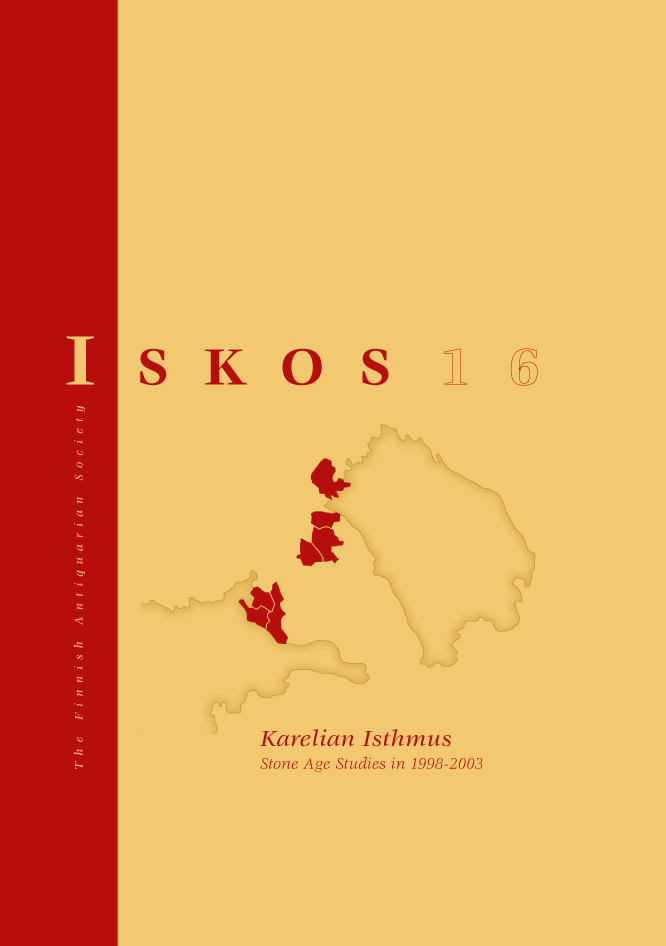The palaeoenvironment of the 'Antrea Net Find'
Abstract
The 'Antrea Net Find', found in 1914 in Korpilahti in the Karelian Isthmus , is one of the most important archaeological discoveries in Finland. For a long time, it was the oldest dated net find in Europe.
New sediment samples were taken from the assumed find spot in 1998. The original net material and the new sediment sequence around the find spot were re-investigated using modern physical and palaeoecological techniques, They included AMS radiocarbon dates from the net material and the sediment above the find, as well as lithostratigraphical and isotope analyses from the surrounding sediment sequence. Also the material of the net cord was investigated. The palaeoenvironment of the Korpilahti area around the time of the event was reconstructed using modern biostratigraphical diatom and pollen methods.
The 'Antrea Net Find' was recovered from the uppermost part of silty clay gyttja. The AMS radiocarbon date of the net yielded an age of 9 140±135 BP. The net cord has been made of willow bast. The dates from the silty gyttja sediment above the find level yielded the ages 9095±90 and 8965±85 BP. Stable isotope data indicate a rapid change in the sediment c. 9000 BP (8250 calBC).
The radiocarbon dates with the diatom stratigraphy typical for the Ancylus Lake stage from Korpilahti suggest that the artefacts sank at the time of the maximum of the Ancylus transgression between 9200 and 9100 BP (8400 and 8300 calBC). At this time, the environment was characterized by forests dominated by pine, which had been present for hundreds of years, and thus the bark of old trees was readily available for the bark floats.




